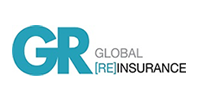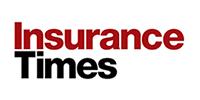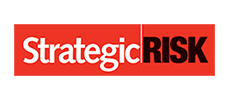Nicholas Holland, portfolio director of MGA Dual’s construction arm, highlights the importance of forensic marking as a theft deterrent tool
Construction machinery theft is a significant and increasing problem, with the UK construction industry losing approximately £800m annually due to theft related costs.

With recovery rates remaining low, there is a need for proactive security measures. Traditionally, insurance is known as a reactive measure, to provide financial support once a loss has occurred. But is there a better way insurance can support construction businesses?
A shift from protection to prevention
Insurance has long been positioned as a safety net rather than an active participant in risk management. However, as the construction industry evolves and losses continue to mount up, there is a growing recognition that insurers must play a more proactive role.
By embedding preventative measures into policies, insurers can help reduce both the frequency and severity of claims, benefiting all parties.
Preventative strategies are not new to risk management. From fire suppression systems in buildings to cyber security protocols in digital infrastructure, industries have long understood that taking steps to mitigate risk can be far more effective than dealing with the consequences of a loss.
In the construction sector, theft prevention is a critical area where this can make a tangible difference.
The power of forensic marking
One approach gaining traction is the use of forensic marking to deter theft. Unlike traditional security measures, forensic marking focuses on making stolen goods traceable, which discourages criminals from targeting protected sites.
Studies have also shown that visible deterrents – such as warning signs and security stickers – can significantly reduce the likelihood of theft simply by increasing the perceived risk for criminals.

Forensic marking serves as both a deterrent and a recovery tool. By applying a unique, trackable identifier to machinery and equipment, contractors can make it easier for law enforcement to trace and return stolen goods.
This shifts the focus from compensating losses to actively preventing them.
Prevention as a shared responsibility
Forward-thinking insurers are recognising that preventing claims is just as valuable – if not more so – than simply paying them.
Encouraging policyholders to adopt preventative measures not only protects businesses from operational disruptions, but also fosters a more sustainable insurance market where lower claim frequencies can help stabilise premiums.
For construction businesses, integrating theft deterrent measures into daily operations can reduce downtime, improve project timelines and protect financial stability.
Insurers have an opportunity to work alongside policyholders to create environments where risks are actively mitigated.
At Dual, DNA+ is included with every policy that covers own plant and machinery, to facilitate forensic marking. The insured receives a pack containing the fluid, signage and stickers, which should be applied to any item of plant or machinery covered by the agreed policy.
Supplied signage should be put up in prominent places around the contract site and where machinery is stored.
The reduction in risk this brings to the insured means that Dual can reduce the theft excess on policies by 50%.












































